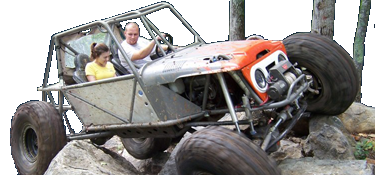Glad you learned something because I’ve yet to find a single nugget of knowledge in your ramblings. And I couldn’t care less about anything political, but thanks for asking.
Whether you have a 3/4 ton truck, a 1 ton SRW, or a 1 ton DRW has nothing to do with "sway control". The only thing that has any impact on trailer sway with a gooseneck/5er trailer is the location of the load. Put the load too far back, don't have enough pin weight, get sway. You need to shoot for somewhere between 15-30% of the trailer weight on the pin. Sway control with these trailers simply means putting the COG of the load on or forward of the centerline of the trailer tires. (Takeaway here is they're really pretty tolerant of badly-loaded trailers, but there's a breaking point for everything).
If a torsion axle trailer is nose-low, it will sway, but it's because the front axle(s) is overloaded and the other isn't carrying much weight. Basically, you're shifting the centerline of the rear axles forward, and the result is the same as if you pushed the load rearward. Conversely (and all else being equal) torsion trailers ride better than leafs because they have independent suspension and shock absorption, where solid axle leaf spring trailers don't. (Adding shocks to a leaf spring trailer only fixes one issue, doesn't address the lack of independent tire movement).
Fundamentally, 5th wheels and goosenecks work similarly, with one big exception: 5th wheels often allow very little (or no) differential roll between the truck and trailer. So if the trailer rolls to one side, it twists the tow vehicle through the hitch, and the truck rolls too. That is made worse by the pivot point being a foot or so above the COG of the tow vehicle, creating a lever arm. Dual rear tires make a big difference here, since they add width outboard of the springs (geometry FTW) and additional sidewalls and tire contact patch to counteract roll imparted on the tow vehicle by the trailer. If you've ever watched a tractor with a box trailer navigate a swale at a driveway, you've seen this in action. The trailer twists, the truck frame twists, etc. The same thing happens when a crosswind blows on the top of the trailer, just at a smaller magnitude. Gooseneck balls are located much closer vertically to the COG of the vehicle and allow free movement in all directions, so roll in the trailer doesn't apply significant loads to the tow vehicle. Basically, it's connected with a ball-and-socket joint, and it doesn't have any leverage anyway. Mind you, none of that is "sway".
Tag trailers have problems with pin weight and sway because it's inherent in the design. Not enough pin weight and you get sway, too much pin weight and the trailer wants to go straight and pushes in corners. The pivot point is several feet behind the rear axle of the tow vehicle, which gives the trailer leverage on the tow vehicle both in yaw and in pitch. Torsion bars, little shock absorbers, and all their variations work to counteract the shortcomings of the tag trailer design. The torsion bars use the frame of the trailer to pull up on the ball, forcing load forward on the tow vehicle and aft on the trailer. Likewise, sway controllers use a variety of methods (mostly boiling down to friction) to make it hard for the trailer to turn relative to the tow vehicle. So when a crosswind hits the trailer, the trailer has a 4ft lever arm by which to drag the ass of the tow vehicle sideways. When it recoils, it has a 4ft lever arm to drag the ass the other way. In these circumstances, "sway" has a lot in common with death wobble, head shake, etc. You have a mass (the trailer) acting in response to a positive feedback loop (the ass of the car shifting side to side). Sway controllers combat this by stiffening the pivot, modulating the vehicle brakes to dampen the oscillation, etc. If the pivot point is ahead of the rear axle, there's no leverage, and no positive feedback loop.
If you check your axle weights before and after hitching up a 5th wheel or gooseneck, you'll find that the weight on the front tires goes up when the trailer is attached. How much depends on the weight on the pin and the wheelbase of the vehicle, but 10% of the pin weight is a reasonable guess. On the other hand, dump a bunch of pin weight on a bumper hitch, and the weight on the front tires goes down. Stab the brakes hard from speed, the trailer rolls forward, pushing down harder on the ball, and further unweighting the front tires - it just makes the problem worse. Stab the brakes with a gooseneck trailer, and you might get a bit of nose-diving on the truck, but it's just as likely to be flat throughout the event.
Bottom line: no such thing as a gooseneck sway controller.



 lol
lol